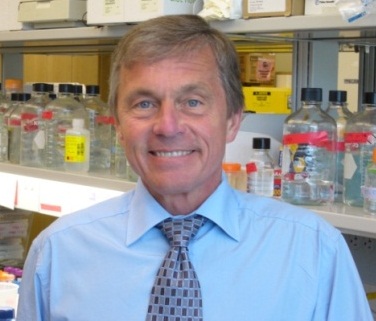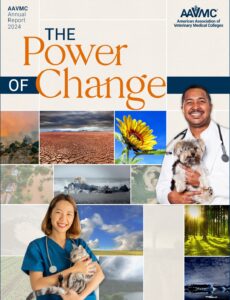Veterinarian’s Success Regenerating Tissue Likely to Lead to Game-changing Medical Advancements, New Approaches to Healing

Veterinarian and physician Dr. Stephen Badylak is
conducting research that promises new approaches
to healing.
When people ask Dr. Stephen Badylak what he does for a living, he has a simple answer: “I make body parts.”
The more complicated answer is that he’s a veterinarian, physician, and pathologist who is also a research professor in the Department of Surgery and director of tissue engineering at the McGowan Institute for Regenerative Medicine at the University of Pittsburgh, where he takes a novel approach to healing that involves use of a biologic scaffold material to reconstitute missing or injured soft tissue, initiate wound healing and stimulate tissue regeneration.
His approach involves harnessing the human body’s amazing, built-in ability to heal itself, but in a way that’s more akin to what occurs in the womb than what usually happens to mature body parts. Usually, once any significant amount of body tissue is injured, the body’s immune system kicks in with a protective process of inflammation and scarring. But Badylak has discovered a way to circumvent the scarring response, recruit the body’s own stem cells, and regrow lost tissue, complete with blood vessels and nerves. Imagine a world in which a mature finger, foot or even a limb that has been crushed, blown off or severed can regenerate and grow back, similar to the regenerative abilities of a salamander or starfish, as if tapping once again into growth mode and the genetic code embedded in every cell.
Dr. Badylak’s work, which involves using the extracellular matrix (ECM) to create the right environment for cells to regenerate, brings that vision out of the realm of science fiction and into reality. Already, he’s been able to reconstruct small finger parts and induce the formation of new leg muscles in a soldier’s leg after the muscle had been destroyed as the result of a roadside bomb. In fact, his work shows so much promise for the functional replacement of injured or missing body parts that the Department of Defense is funding an $8 million study at the University of Pittsburgh.
It all began with an intriguing discovery that occurred in response to a thoughtful but “serendipitous” surgical intervention on a dog where Dr. Badylak improvised a dog’s aorta out of the same dog’s intestine. That surgery was so successful that, by the next day, “Rocky” the patient was eating breakfast and wagging his tail. That led to the discovery that various tissues, even tissues from different species such as the pig, can be used to create matrices or scaffolding on which to stimulate the growth of new tissue. Eventually he found that placing the tissue scaffolding in a human body, minus the pig’s cells, encourages the human body to work with the scaffolding to recruit its own stem cells, modulate the immune response, and stimulate a constructive tissue remodeling response.
Since then, Dr. Badylak has successfully tested his techniques in five human patients with cancer of the esophagus and has successfully promoted the formation of normal replacement tissue. The surgery involved stripping out the cancerous mucosal lining of the esophagus, “kind of like taking off a sock inside out,” and replacing the removed mucosa with biologic scaffolding. That treatment approach changed the way the esophagus healed, causing it to grow new, scar-free tissue. All five patients are now cancer free with normal functioning esophageal tissue.
Clinical trials are currently underway with impressive results.
Badylak practiced as a veterinarian at a mixed animal practice before beginning his academic career at Purdue University’s Hillenbrand Biomedical Engineering Center. Since then, he’s gone on to hold over 50 U.S. patents (200 worldwide), author more than 250 scientific publications and 20 book chapters, and chair the Bioengineering Technology and Surgical Sciences Study Section (BTSS) at the National Institutes of Health, among many other honors and achievements. He is the current president of the Tissue Engineering Regenerative Medicine International Society (TERMIS).
He foresees a day in the near future when ECM, perhaps in concert with stem cell therapy or other regenerative techniques, could successfully treat degenerative spinal cord disease and regrow virtually every tissue in the body, including brain tissue damaged by strokes.
Badylak views his veterinary education as invaluable in providing him with the background and experience necessary to approach research with a comprehensive perspective that can lead to groundbreaking, life-enhancing discoveries. “I don’t think veterinarians realize that they’re trained better than any other group to work in interdisciplinary settings,” he says. “They’re experienced in comparative pathology and understand the differences between species. That base knowledge gives veterinarians a step up that can have a huge impact on the field of medicine. … I’ve had veterinarians in my lab for the past 10 years and they are always some of the most valuable members of my team.”
As both a veterinarian and physician, Badylak describes the rigor of a veterinary medical education as second to none. He encourages veterinary students to pursue medical research, and especially regenerative medical research, because of both the field’s incredible growth potential and the unique, comparative foundation that a veterinary medical education provides.
-by Jeanne Johnson
Learn more about Dr. Badylak’s lab.
Connect with associations involved in regenerative medicine:
www.termis.org





SHARE